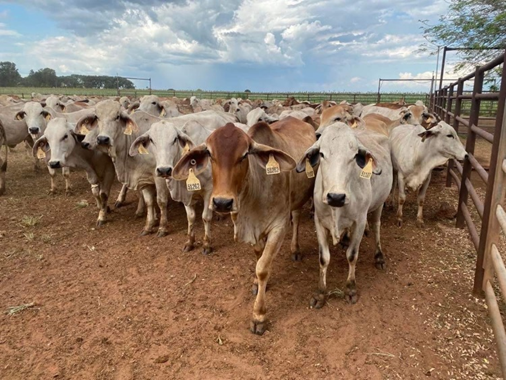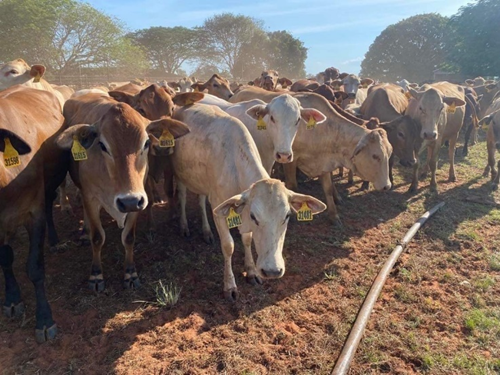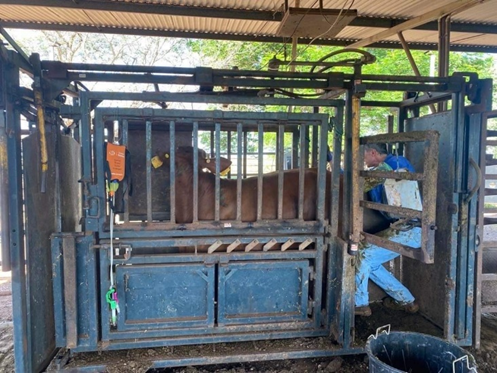Selected Brahman and Composite scanning and end of mating
During the first week of April 2022, Livestock Research Officer Gretel from the Department of Industry, Tourism and Trade’s Livestock team in Katherine and Darwin-based Principal Livestock Research Scientist, Tim Schatz, travelled to the department’s Douglas Daly Research Farm for the annual end of mating muster. The 3 month controlled mating has now concluded for the 2 and 3 year old Selected Brahman and Composite females at the Douglas Daly Research Farm.
After mustering the mob to the yards, bulls were removed from the paddock and the cows were pregnancy tested to see how many were in calf. Cows that were not pregnant were ovarian scanned to see whether they were cycling. The calves from the previous mating were also inducted into the recording system for the first time with their sex and weight recorded. These calves will be weaned in a further 6 weeks. Cows that were not pregnant at the end of mating will be pregnancy tested again at the weaning muster to pick up any pregnancies that were too early to detect at the end of mating.
The data collected during this muster contributes to future decision making and animal selection for the Repronomics 2 and the Select Brahman and Tropical Composite Projects. The females in the Repronomics 2 project are contributing data to increase accuracy of female fertility EBVs (to allow producers to select highly fertile animals to increase the overall profitability and efficiency of their herds).
There has been over 30 years of selection in the Selected Brahman and Composite herds to breed the fertile animals that are adapted to the tropical environment while also meeting requirements for the live export market. These projects have allowed the Department of Industry, Tourism and Trade to produce a highly fertile herd that is made available to the industry through the department’s annual bull and cow sales.
If you would like to take advantage of the research to develop these climactically adapted cattle, you can take part in the department’s annual cattle sales taking place in July.



